|
1981 - Epoch Cassette Vision |
  |
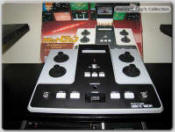 |
Epoch, better know for their game software and toy products, was actually very involved with
hardware development in Japan dating back to their first console release in June 1981 - the Epoch Cassette Vision. This very obscure
system was actually a hybrid pong / cartridge-based unit - the first of its kind in Japan. Though financial windfalls were never
achieved, the moderate success that the Cassette Vision did enjoy was due to one reason - correct price positioning.
Read more... |
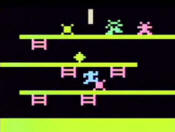 |
|
1981 - VTech CreatiVision |
   |
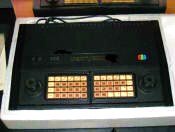 |
The CreatiVision was introduced in 1981 by VTech (Video Technology Limited), a Hong Kong
based company. The unit was actually a computer hybrid (a small trend in those days). Appearance
wise it was a typical console at heart, but by rotating the console's joysticks 90 degrees and then inserting them into two
compartments on top of the console you were given a makeshift keyboard. Throw in a BASIC program cart and your console becomes a
microcomputer.
Read more... |
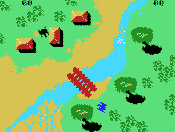 |
|
1982 - Coleco ColecoVision |
   |
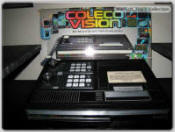 |
After nearly bankrupting itself in 1978 with overstocked Telstar units, Coleco once again
entered the console market looking to de-throne Atari 2600 and Intellivision, the current kings of the hill. ColecoVision was released
in 1982 and boasted amazing specs for its time which showed in its arcade conversions. To secure their success Coleco reached out to a
Japanese based company called "Nintendo" and paid $250,000 for the rights to a super popular arcade game called Donkey Kong. Donkey
Kong became a pack in game with the console.
Read more... |
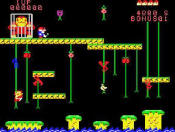 |
|
1982 - Atari 5200 SuperSystem |
  |
_Front_small.jpg) |
The Atari 5200 was established in 1982 to compete with Intellivision and to become the
successor of the Atari 2600. The Atari 5200 was a modified version of the Atari 400/800 which was the most powerful 8-bit home
computer system of its era. The graphics were a step above the older competition and went toe to toe with their newest competitor the
ColecoVision.
Read more... |
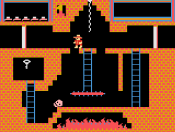 |
|
1982 - Emerson Arcadia 2001 |
      |
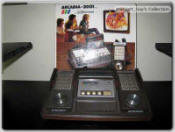 |
In 1982, Emerson Radio Corporation decided to enter the video game hardware arena with their
release of the Arcadia 2001. Better known for their development of affordable electronic products, this move was not entirely a big
surprise. Emerson was always looking for market niches to penetrate to utilize their existing electronics manufacturing team. As with
their previous releases of low-end, price friendly electrical component ventures, the Arcadia 2001 would eventually suffer the same
fate.
Read more... |
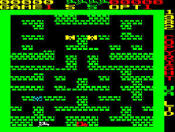 |
|
1982 - GCE Vectrex |
    |
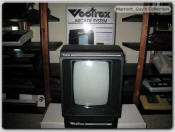 |
The Vectrex was released in November 1982 by General Consumer Electronics (GCE). It wasn't
just your average game console. The legendary GCE \ Milton Bradley Vectrex is the world's only standalone vector graphic home video
game system. The console was cartridge based like all other consoles, but the unit came with a 9-inch monochrome monitor, an attached
joystick and even a built in game called Mine Storm.
Read more... |
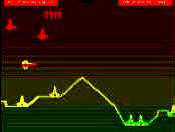 |
|
1982 - Entex Adventure Vision |
 |
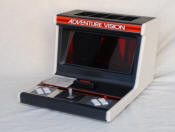 |
Not quite a console and not quite a hand held, the Entex Adventure Vision is one of the holy
grails of video game collectors. Released in 1982 to a lukewarm reception, the Adventure Vision had only about a year lifespan on the
market before it was pulled. The consoles that were sold were fragile and troublesome, so few have survived to today. This makes it
difficult to find a working example and nearly impossible to find one for a low price. It's estimated that only 10,000 of the consoles
were made with 1,000 each of the three extra games.
Read more... |
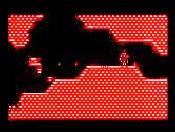 |
|
1983 - Casio PV-1000 |
 |
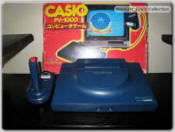 |
Casio of Japan, a successful electronics manufacturer, released first video game console,
the Casio PV-1000 in October of 1983 for 14,8000 yen ($139 USD). Debuting against the likes of the Sega SG-1000 and the Nintendo
Famicom, this extremely rare and obscure system rapidly was an afterthought and not to be seen on video game store shelves shortly
after its release.
Read more... |
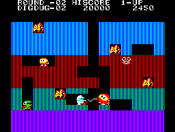 |
|
1983 - Gakken Compact Vision (TV Boy) |
 |
_Top.jpg) |
Gakken was a popular manufacturer of arcade and handheld games throughout the 1980s. In
1983, Gakken decided to try their hand at the home console market with the Gakken Compact Vision. This cartridge based color game
system that retailed for a nice low price of 8800 Yen. The console design is by far one of the most unique and innovative for its
time.
Read more... |
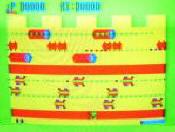 |
|
1983 - Nichibutsu My Vision |
 |
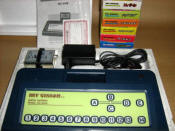 |
Another console released only in Japan. Arcade game maker Nichibutsu wanted to take a chance
on the console market. In 1983 they released the KH-1000 better known as "My Vision". There were
no controllers, but instead used 14 numbered buttons, 4 lettered directional buttons (A thru D) and 1 select button (E) located on the
top face of the console. Plastic overlays could be placed on the console to identify what the buttons were used for.
Read more... |
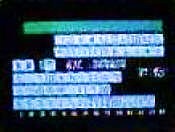 |
|
1983 - Sega SG-1000 |
   |
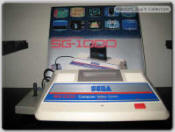 |
Sega's SG-1000 (Sega Game 1000) (a.k.a Mark I) was the company's first attempt at home
consoles. It was initially test marketed in 1981 and finally released to Japanese consumers in June of 1983. It was a pretty advanced
system for its time and featured impressive technical specifications. The system would be sold in Japan until 1985 and did make it in
two overseas markets, Australia & New Zealand.
Read more... |
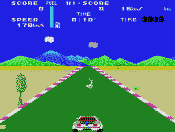 |
|
1983 - Nintendo Famicom (NES) |
      |
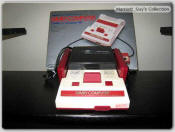 |
Talk about a success story. Nintendo's jump into the console market was a gamble which
turned a simple toy company into one of the biggest videogame console manufacturers in the biz. Nintendo began its gaming history
producing arcade hits like Donkey Kong and Mario Bros, and selling the licensing rights to those games for home console use (see
Colecovision). Eventually Nintendo decided to take a crack at the home console industry.
Read more... |
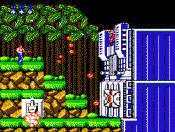 |
|
1983 - Tomy Pyuuta Jr. |
 |
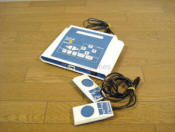 |
In 1982, Tomy of Japan decided to try their hand in the computer market. They introduced the
Tomy Pyuuta (pronounced PYOOO-ta and means 'computer dude'). It garnered moderate success and appeared on both European (GrandStand
Tutor) and US shores (Tomy Tutor) in 1983. However due to fierce competition with competitors (MSX, Commodore, Atari computers), the
console did better in its native home of Japan. In 1983, the console version was released.
Read more... |
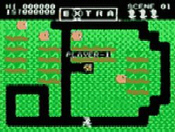 |
|
1984 - Epoch Super Cassette Vision |
  |
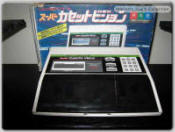 |
The Super Cassette Vision was released in 1984 as the successor to Epoch's Cassette Vision
in Japan. It retailed in Japan for around 15,000 Yen. The system was also manufactured and distributed for Europe (particularly
France) by a company called ITMC. In Europe it was called the Yeno Super Cassette Vision. The system sold fairly well initially with
about 30 games made for the system in Japan.
Read more... |
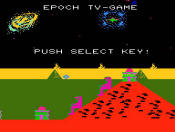 |
|
1985 - Daewoo Zemmix |
 |
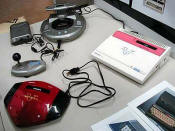 |
In 1983, Korean based Daewoo produced the Zemmix CPC-50 console (Zemmix in Korean means
"It's Fun"). This console was basically a MSX computer in a console casing. It was an NTSC based machine capable of playing MSX
cartridge games. Some Zemmix units also came with an available port at the bottom for keyboard use. Zemmix consoles are extremely
rare. It is definitely an impressive machine, and a MSX collectors dream.
Read more... |
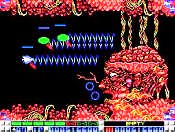 |
|
1985 - RDI Halcyon |
 |
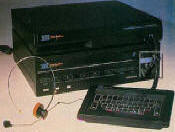 |
The RDI Halcyon was truly a console ahead of its time. Created by Rick Dyer, one of the
people behind the hit game Dragon's Lair, it was poised to push gaming technology into uncharted territory. In terms of 1985
technology, it would have been more advanced than even the home computers of the time. Named in part after the computer featured in
the movie 2001: A Space Odyssey, the Halcyon was intended to seem like a living, thinking member of your family.
Read more... |
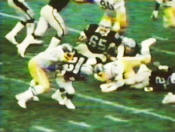 |
|
1985 - Sega Mark III (Master System) |
      |
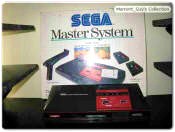 |
To compete with the Nintendo Famicom in Japan, Sega released the successor to the Mark I/II
and called it Sega Mark III in 1984. The Mark III could produce great 8 bit graphics with specs superior to the Famicom. The console
had two game formats which were cartridges and a Sega Game Card format. The cards held only 256K of data (cartridges held over 4 times
that amount), but the advantage to both Sega and the consumer was the fact that the cards were cheaper to manufacture, and sold for
less then the carts did.
Read more... |
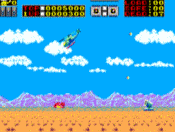 |
|
1985 - BBC Bridge Companion |
 |
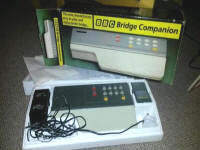 |
During the mid 1980s, just about
everyone was hopping on the video game bandwagon after
Nintendo's extremely successful Famicom / NES system. Among
these new players included the British Broadcasting Company
(BBC). Though at first glance this may sound like an odd
marriage, the BBC was no stranger to the electronics field. Partnering with the Acorn Computer Company, they developed a
relatively successful line of computers known as the BBC Micro
with the first in the series debuting in December 1, 1981. Their
entry into the console world would be the BBC Bridge Companion.
Read more... |
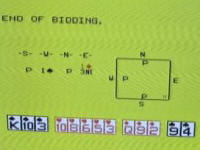 |
|
1986 - Nintendo Family Computer Disk System |
 |
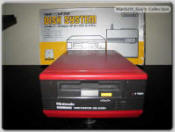 |
To understand the reason for the Famicom Disk System's existence, you need to look back to
1985. While video game consoles were dead in the US, the Famicom boom was taking hold of Japan's populous. However, the game's time
honored ROM cart manufacturing was expensive. Even the simplest games retailed for over 5000 yen, bringing them beyond the reach of
most children's allowances. Nintendo's answer? Release games on disks, which are much cheaper than cartridges to make.
Read more... |
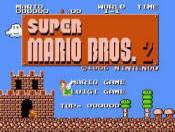 |
|
1986 - Atari 7800 Pro System |
   |
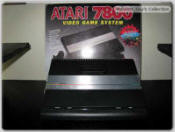 |
The Atari 7800 Pro System was originally designed around 1983 and 1984, but was never
released during that time frame because of the "Great Videogame Crash of 1983". Around 1985 Nintendo had revitalized the videogame
industry with its release of the NES. T his prompted then Atari CEO Jack Tramiel to try at the console market once again in 1986.
Read more... |
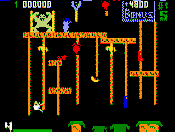 |
|
1986 - Bit Corporation DINA 2 in one (2-in-1) |
  |
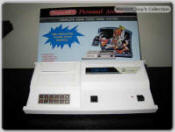 |
Bit Corporation had their stake in the videogame industry for years creating games for the
Atari 2600. Being a Korea based company allowed them the ability to overlook copyright and patents. In the mid 1980s Bit Corporation
created a line of computers (the Bit 60 and Bit 90) that were compatible with both Atari 2600 and ColecoVision cartridges. Around 1986
they went a step further and created a console called DINA 2 in one (2-in-1).
Read more... |
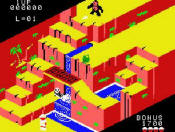 |
|
1987 - Worlds of Wonder Action Max |
  |
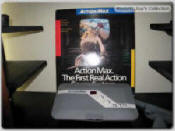 |
The year was 1987 and the video gaming world was ruled by the Nintendo Famicom\NES, followed
by a somewhat strong competitor in the Sega Master System. Atari was still a big player at the time, though their release of their
5200 and 7800 systems could not effectively compete with these newer breeds. A company called Worlds of Wonder decided to enter into
the fray with the release of the Action Max.
Read more... |
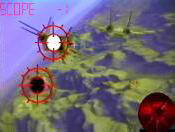 |
|
1987 - Atari XE Game System (XEGS) |
   |
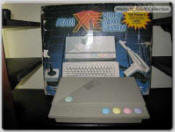 |
Atari introduced the XE Game System in 1987. The XEGS was merely a console remake of their
8-bit Atari 65XE computer. For $199 you got the console, a standard joystick, a light gun, and a pack in game called Bug Hunt (light
gun game). The marketing strategy was to take advantage of the back stock of Atari computer cartridges (10 years worth). Even though
it looks like a console, the XEGS is a true 8-bit Atari computer system.
Read more... |
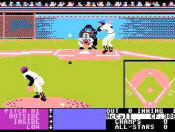 |
|
1987 - Takara \ Bandai Video Challenger |
   |
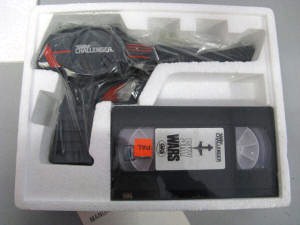 |
The most common media forms for games in the 1980s was the cartridge, but developers conceived the idea
of using VHS video cassettes as a new form of game media. A company called Worlds of Wonder first introduced the "VHS
Console" in 1987 with their system named the Action Max. TakaraTomy (now simply Tomy) followed suite with their own version
calling it the Video Challenger. Like the Action Max, this system required the owner to own a VCR.
Read more... |
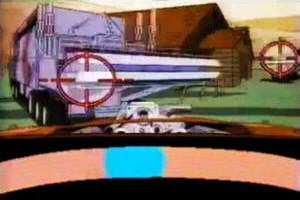 |
|
1987 - NEC PC Engine (TurboGrafx-16) |
     |
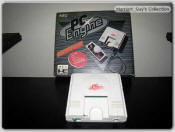 |
On October 30, 1987 the first 16-Bit home videogame console was released in Japan by NEC. The PC Engine was clearly a "next generation" system with its amazing specs and wallet sized card games called HuCards. The PC Engine
was immensely popular in Japan, outselling the Famicom by a significant margin. Two years after its Japanese introduction, NEC
announced plans to bring the PC Engine overseas. NEC dubbed the US release TurboGrafx-16 and prepared to dominate both Nintendo and
Sega as they did in Japan.
Read more... |
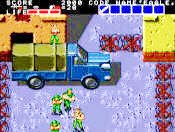 |
|
1988 - Sega Mega Drive \ Genesis |
      |
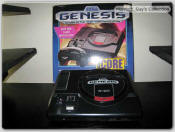 |
Sega made a good attempt with their Master System against Nintendo's virtual monopoly of the
console industry, but they were about to introduce next generation gaming to the masses. After two years of development the Sega Mega
Drive was released in Japan in October of 1988. Sega had a lot of hits in the arcade such as After Burner and Golden Axe and part
of the appeal of the Mega Drive was that now these games were not only playable at home, but were fairly close to the arcade versions.
Read more... |
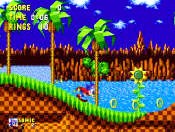 |
|
1988 - NEC PC Engine CD-ROM2 (TurboGrafx CD) |
   |
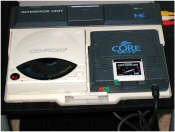 |
In 1988, NEC took gaming to the next level. They were the first to use the immense storage
capability of Compact Disc. NEC's CD-ROM add-on device was called TurboGrafx CD or TG-CD (PC Engine CD-ROM2 in Japan). The add-on
would be immensely popular in its native country of Japan, releasing over 400 games. The console did not fare as well in the North
American market.
Read more... |
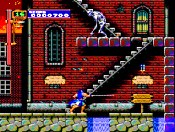 |
|
1989 - NEC SuperGrafx |
 |
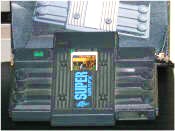 |
In 1989, NEC decided to yet again redesign the highly successful PC Engine console and
upgrade it with more RAM. This new design, called SuperGrafx, was sold in Japan only and was created to compete against the threat of
the Nintendo Super Famicom system. NEC stopped distributing SuperGrafx when they saw their PC Engine was still selling well. Only 5
games were made to take advantage of the upgraded SuperGrafx, and it played all PC Engine games as well as use the CD add-on.
Read more...
|
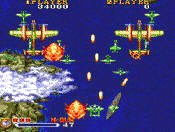 |
 DISCUSS
DISCUSS